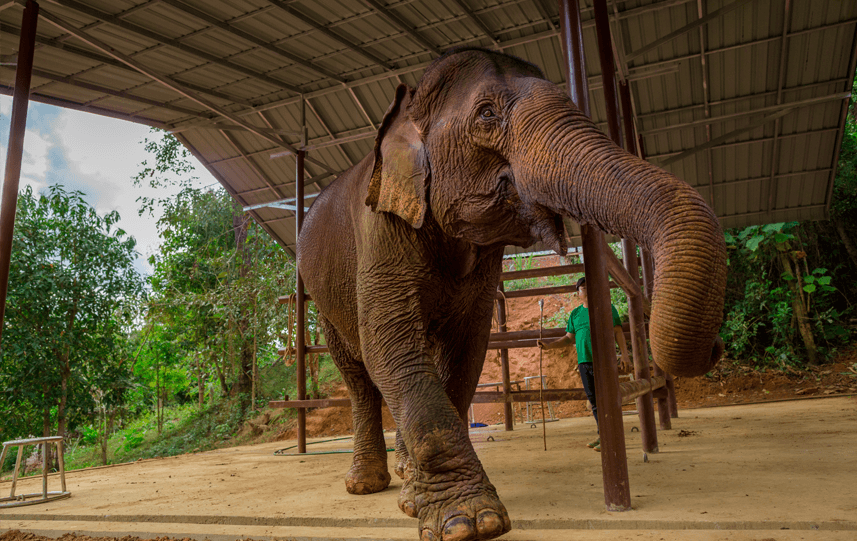Positive Reinforcement consists of daily soft training in order to teach our elephants how to present their limbs and get used to being touched on any part of their bodies. These exercises allow us to perform health checks and treatments without stressing the elephants. Elephants are rewarded when they perform the right action according to the verbal command they receive.
Positive Reinforcement
Training Elephants to Receive Care

This training is accompanied by health checks performed by the ECC staff and international veterinarians in order to ensure their good health. Positive reinforcement is also important in proposing a new training method to local mahouts, some of whom could otherwise resort to force.
Positive Reinforcement
In Laos, almost all the elephants have undergone a harsh training. This happened when they were separated from their mother at the age of two to three years old. This training is embedded in an animist ceremony and is deeply rooted in the Laotian mahout culture. Changing people’s mindset that is influenced by their culture and religion needs to be approached carefully.
Elephants are very intelligent animals. By using positive reinforcement, rather than negative reinforcement, elephants can learn commands quicker than you would think. Showing the mahout community that soft training methods are effective is the first step to changing the way elephants are treated.
Why does an elephant have to be trained?
We need to be able to balance a life in semi-wild conditions and the control required by mahouts and hospital staff. For the elephants that are still under human care, we need to make interactions as safe as possible. Mahouts must bring elephants to new pastures each day to make sure they have enough to eat and drink. Our hospital staff has to be able to perform health checks and treatments.
What is positive reinforcement?
Elephants get rewards when they perform the right action according to the verbal command they receive. This reward can be a treat or affection given by the mahout in the form of physical contact.
Originally used to make treatments and medical checks easy, our Positive Reinforcement Training consists of daily sessions. During these trainings our elephants present their limbs to and let themselves be touched by the welfare staff.
What are the next step?
Our mahouts play a very important role in the training process. As caretakers, they spend most of the day with the elephants and needed to be convinced that Positive Reinforcement works. They use these techniques while guiding their elephants through the forest. This daily activity reinforces the bond between the animal and its keeper while avoiding any harm.
Positive reinforcement is an effective way to teach commands to animals of all ages. As a result, our members of staff are successfully training calves at a young age. The calves are not undergoing the same amount of stress nor are they being separated from their mother.

